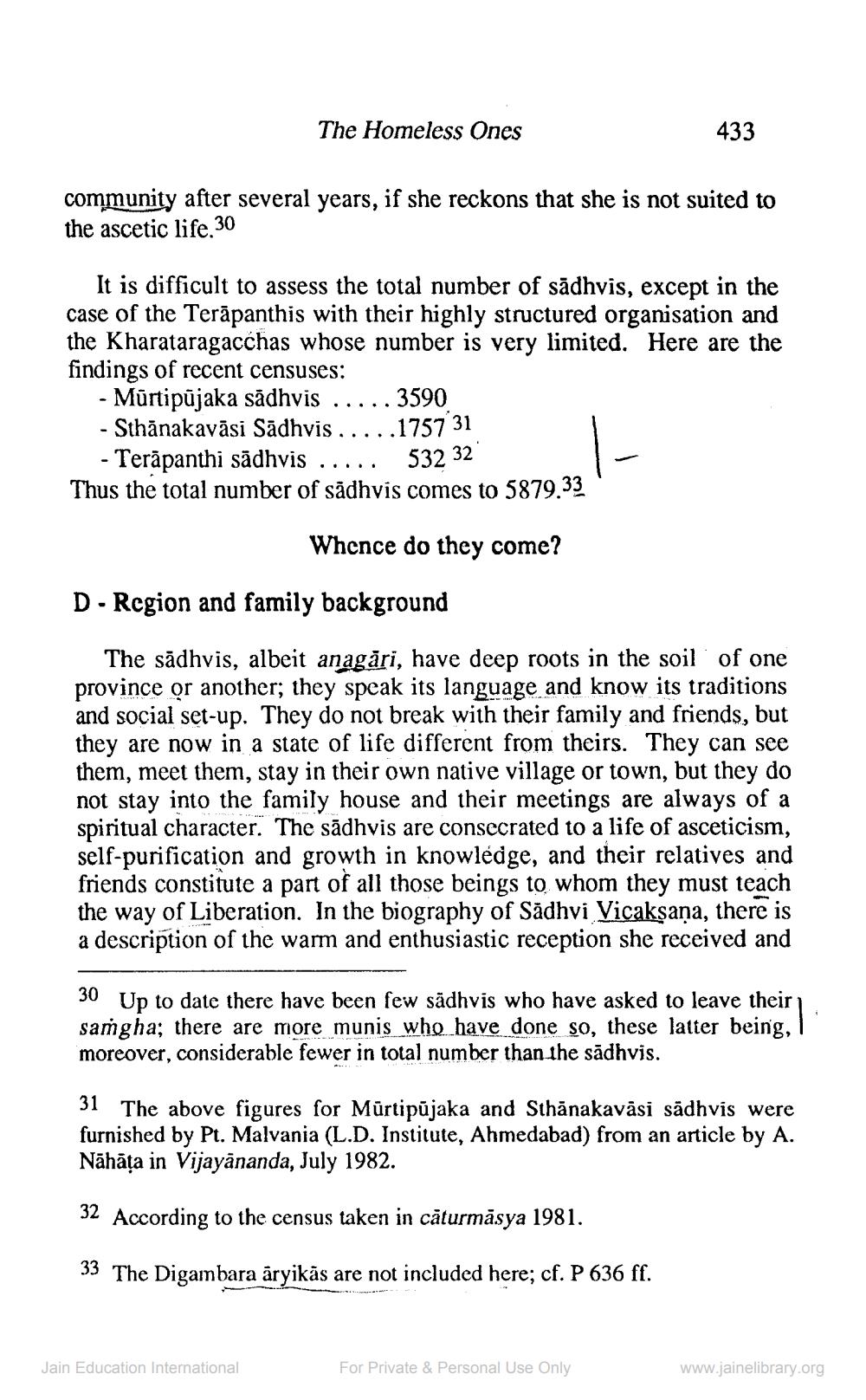________________
The Homeless Ones
community after several years, if she reckons that she is not suited to the ascetic life.30
It is difficult to assess the total number of sadhvis, except in the case of the Terapanthis with their highly structured organisation and the Kharataragacchas whose number is very limited. Here are the findings of recent censuses:
Mūrtipujaka sadhvis
- Sthānakavāsi Sādhvis
3590 .1757 31
532 32
- Terapanthi sadhvis
Thus the total number of sadhvis comes to 5879.33
Whence do they come?
433
D-Region and family background
The sadhvis, albeit anagări, have deep roots in the soil of one province or another; they speak its language and know its traditions and social set-up. They do not break with their family and friends, but they are now in a state of life different from theirs. They can see them, meet them, stay in their own native village or town, but they do not stay into the family house and their meetings are always of a spiritual character. The sadhvis are consecrated to a life of asceticism, self-purification and growth in knowledge, and their relatives and friends constitute a part of all those beings to whom they must teach the way of Liberation. In the biography of Sadhvi Vicaksana, there is a description of the warm and enthusiastic reception she received and
Jain Education International
30 Up to date there have been few sädhvis who have asked to leave their samgha; there are more munis who have done so, these latter being, moreover, considerable fewer in total number than the sadhvis.
31 The above figures for Mūrtipūjaka and Sthanakavāsi sädhvis were furnished by Pt. Malvania (L.D. Institute, Ahmedabad) from an article by A. Nāhāta in Vijayananda, July 1982.
32 According to the census taken in căturmasya 1981.
33 The Digambara äryikās are not included here; cf. P 636 ff.
For Private & Personal Use Only
www.jainelibrary.org




